Last Updated on September 20, 2023
This year I have often seen cyclists breaking the rules. Meanwhile, getting a fine by riding a bicycle is not that uncommon. Let’s look at the cycle rules in Germany, road signs and fines in this topic.
Train delays and strikes in Germany. What can you do
Germany ticket for regional public transport Deutschland-Ticket
Trains in Germany
Local public transport in Germany
Germany by car
Cycle rules in Germany
Condition of the bike and the cyclist
1. Drunk riding on a bicycle is punishable, just like drunk driving in a car. The penalty depends on the number of ppm. But even with fewer ppm there will be a penalty if the person is no longer able to ride the bike normally or has an accident.
This is a significant fine and points in Flensburg.
2. This rule, or rather its absence, always causes uncertainty. A helmet is not mandatory in Germany. But it is highly recommended because it can save your life. Believe me, crosses appear regularly on bicycle roads.
In addition, judges reduce the amount of compensation for head injuries if a helmet was not worn.
You can buy very inexpensive helmets at Aldi or Kaufland.
3. The bicycle must have functioning lights, 2 brakes and a bell. Previously, a dynamo was mandatory. Now a dynamo is not necessary, but you must provide a constant (not blinking) sufficiently bright light. The law specifies 6-volt batteries.
4. For your safety, it is advisable to wear light-colored clothing and have reflective elements on your clothing, especially if you ride on the road most of the way. Otherwise, the cyclist is often very difficult to see.
Where to ride
1. An important rule that is violated most often and which has now become more expensive (previously they were fined 15 euros, if my memory serves me correctly, now it’s 25 euros) – adults are not allowed to ride on the sidewalks.
An “adult” is a cyclist over 10 years old. At age 10, i.e. 4th grade, children take a theoretical and practical exam and are considered trained cyclists.
An adult over 16 years of age may only ride on the sidewalk if he is accompanying a child under 9 years old.
Children under 9 years old, on the contrary, are not allowed to ride on the road, even if there is a dedicated lane there. They can only ride on sidewalks or separated bike paths.
In reality, the police turn a blind eye to riding on the sidewalks if the cyclist is obviously a schoolchild, or if it is a difficult place with a lot of traffic or an industrial zone. In the city center, in pedestrian areas (if there is no sign allowing bicycles), the likelihood of being fined is greatest.
2. Where do cyclists have the right to ride?
- on special bicycle roads (together with pedestrians or separately). If there is a bicycle road with a blue sign and it is in good condition (not covered with snow or branches, etc.), the cyclist not only has the right, but is obliged to ride along it
- on bicycle “autobahns” – a new type of road with predominantly bicycle traffic.
- on pedestrian areas and roads with a frei bicycle sign. However, in these areas, pedestrians have the right of way and the cyclist must ride slowly there.
- on regular city roads – if a bicycle path is not available.
- on the Bundes- and Landesstraße (roads B, L, K) – unless
if there is a white car sign with a blue background (expressway for cars)
and if there is nearby bicycle path marked with a blue sign (then you must ride this way).
It must be said that cyclists do not always end up on major roads of their own free will. It often happens that the village has ended, an initially harmless road continues, and then it turns out that there is nowhere to turn off it. There is a bike path, but you don’t know about it because you didn’t notice the sign and took a wrong turn. Therefore, I recommend that you first look at the route. Signs are not always in the right places.
3. Electric bicycles, whose motor supports a speed of up to 45 km/h (S-Pedelec), are considered cars and ride on the road for cars.
Electric bikes that switch off at 25 km/h (Pedelec) are considered bicycles.
Behavior on the road
1. Cyclists must ride on the right. The cycle path on the left can only be used if there is a sign.
Do you enjoy the site without cookies and maybe without ads? This means that I work for you at my own expense.
Perhaps you would like to support my work here.
Or Cookie settings change: round sign bottom left
2. A cyclist rides in a strip up to a meter wide from the edge of the road. If he is riding around a parked car, he must ride slowly and keep his distance so as not to get hit with his face on the door. Of course, the person getting out of the car will be at fault and they will be fined for this, but you will crash and this is a serious accident.
3. Traffic lights for pedestrians do not apply to cyclists; they must follow either their own traffic lights or the traffic lights for cars.
You can overtake a car on the right at a traffic light only when it is stopped and if there is enough space (a meter to the edge). If it is moving slowly, then you cannot overtake her.
4. A vitally important rule is: do not think for the truck driver, but be afraid of him. Yes, he is obliged to notice you if he turns right, like any other driver. But you are in his blind spot, and most often he does not see you or does not look at the small things under his big wheels.
Therefore, every time at an intersection, check whether a car is about to turn right, especially if it is a truck. It’s best to make eye contact to make sure you’ve been seen. “The driver did not notice when turning right” is the most common cause of death or serious injury for cyclists in newspaper stories.
Also remember that long trucks, buses and trams turn their backs in a different arc than their fronts. They can catch you with their rear end when turning.
5. Cyclists must indicate with their hands where they are turning. When turning left, they must look back twice and change lanes in time.
6. At a zebra crossing you should get off your bicycle and carry it in your hands if there is no dedicated lane for the bicycle. In reality, no one does this. But it is better to cross the zebra crossing slowly. If you’re in the saddle, pedestrians and also cars (!) have the right of way.
7. The “Radfahrer absteigen” sign is recommended and not mandatory when it comes to areas where cyclists can be injured. It is placed, for example, near construction sites or in low tunnels, so that you have no complaints if you hit the ceiling with your head.
If we are talking about the beginning of a pedestrian zone, then you must get off your bike if there is no sign allowing bikes.
8. Children under 7 years of age must be transported in child care devices. These can be child seats of different types or trailers. Please do not break this rule. A child I know had all the skin torn off his leg from the knee down when his leg got caught in a wheel. You definitely don’t want this.
9. Cyclists can ride next to each other as long as they do not obstruct traffic.
10. When you ride on the road, you are subject to the general rules of the road, including speed limits.
The most difficult rule to learn is “give way to the car on the right.” It is valid in 30-kilometer zones (actually all residential areas unless there is an indication of a main road) and at intersections with a dotted line on all sides. The difficulty is that there are no additional signs in these places, you must always remember this rule! And even if you are driving on a road for cyclists, this rule will apply at intersections unless there are additional signs.
Signs for cyclists in Germany
Where to ride
Road for cyclists only:
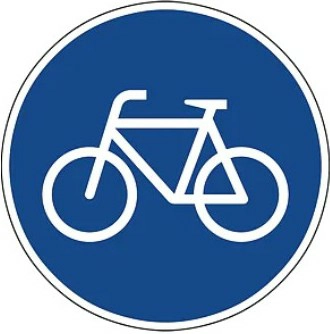
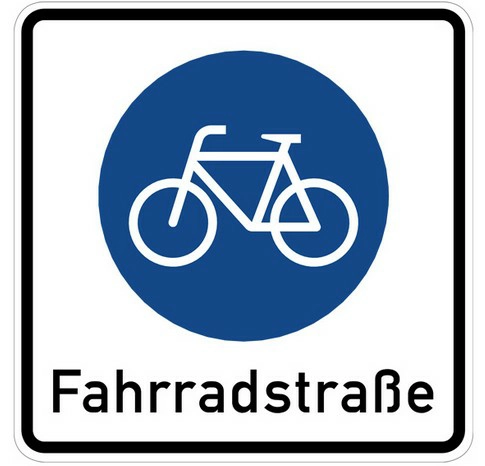
Predominantly bicycle traffic area. Pedestrians can walk along the side of the road. Cars – if there is an additional clarifying sign. The speed limit is 30 km/h. The rule “right before left” applies.

Shared road with pedestrians…
…with lanes separation
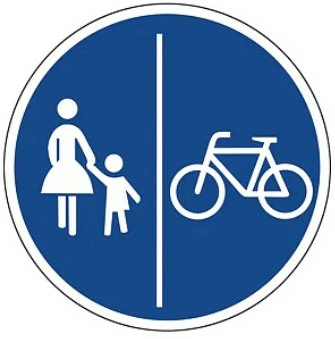
… without lanes separation
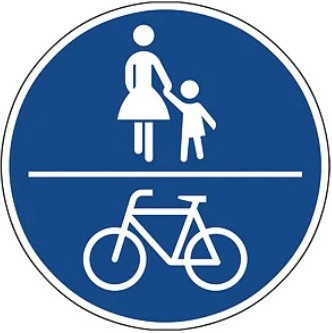
Movement is allowed in both directions (relevant if the road is not in an open field, but to the left of the roadway).
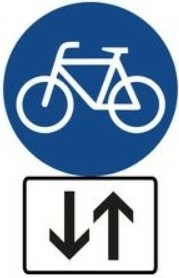
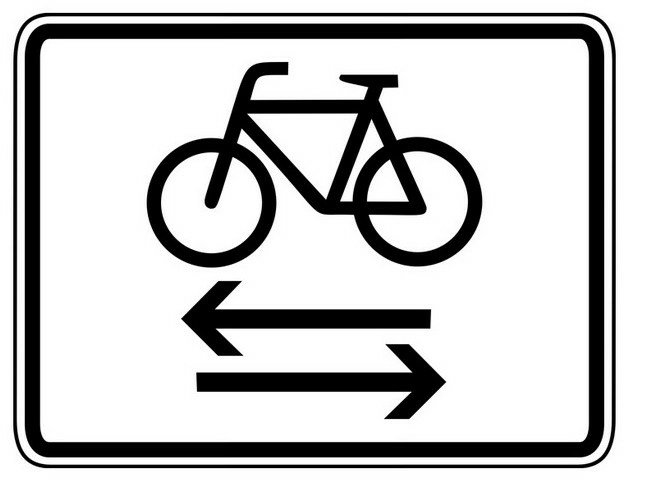
Bicycle “highway” (speed is not limited, but this does not mean that there will be absolutely no obstacles). Begin and end
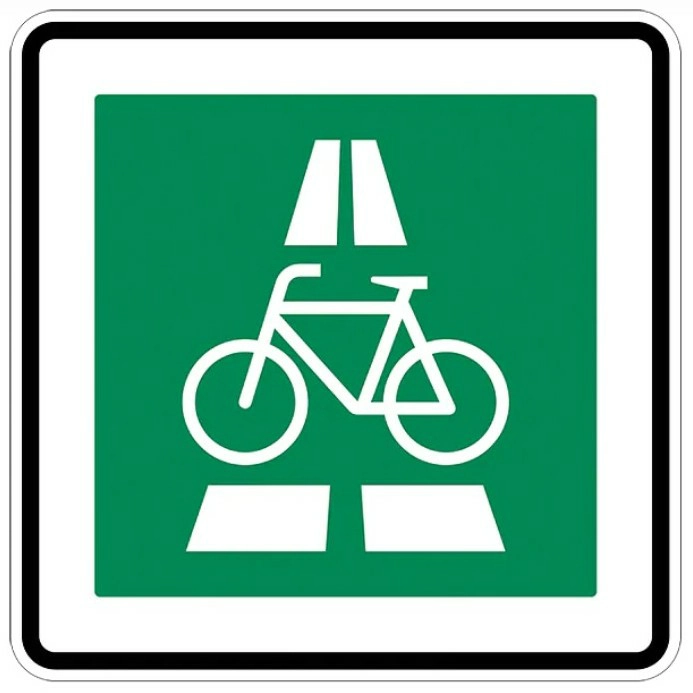
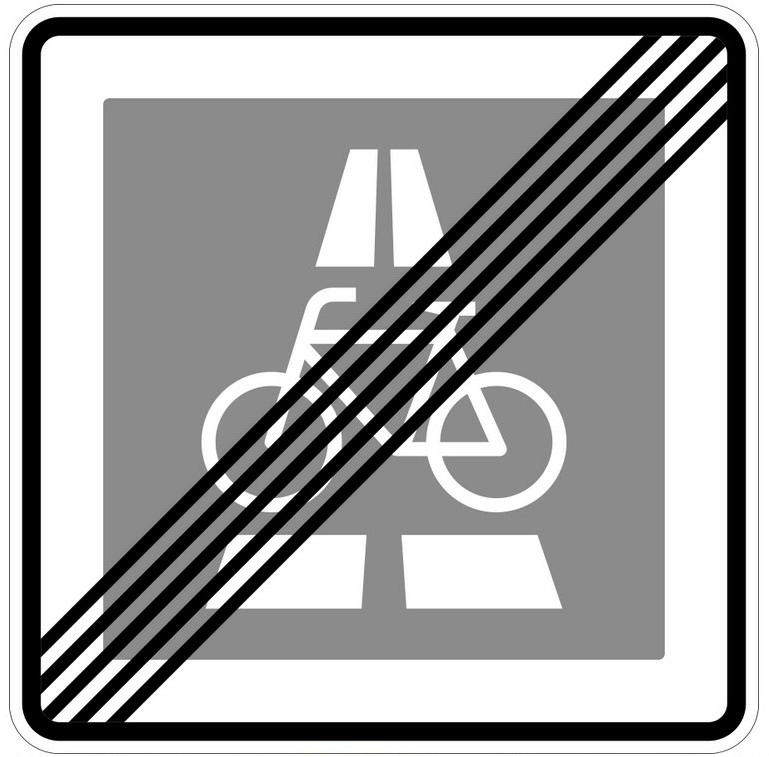
Additional direction signs (black and white, classic green, on a yellow background or other colors in particularly “bikes-welcome” regions).
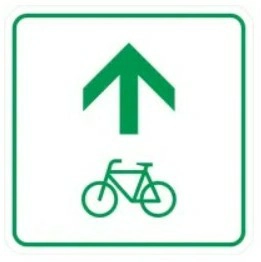
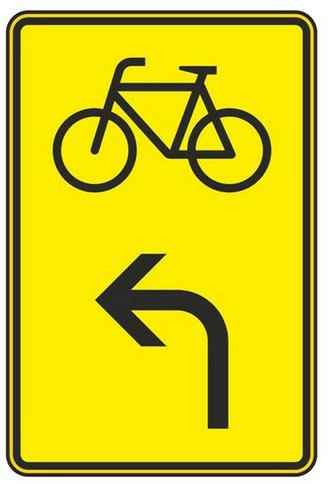
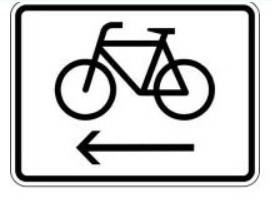
The road has a dead end, but cyclists (and pedestrians) can continue on. This usually means there is a narrow bike path or sidewalk or access to another road ahead.


Cars must turn left, cyclists can also go straight or right.
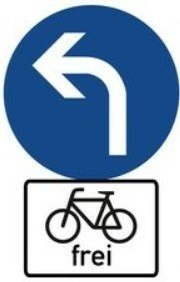
A green arrow on a traffic light means you can turn right at a red light if there are no cars on the left. This arrow can be for all road users or only for cyclists.


Where NOT to ride
Basic prohibition sign for cyclists

A sign that removes for cyclists the restrictions or prohibitions of the sign to which it is attached.

For cyclists, general prohibition signs also apply – passage is prohibited unless there is an additional permitting sign.
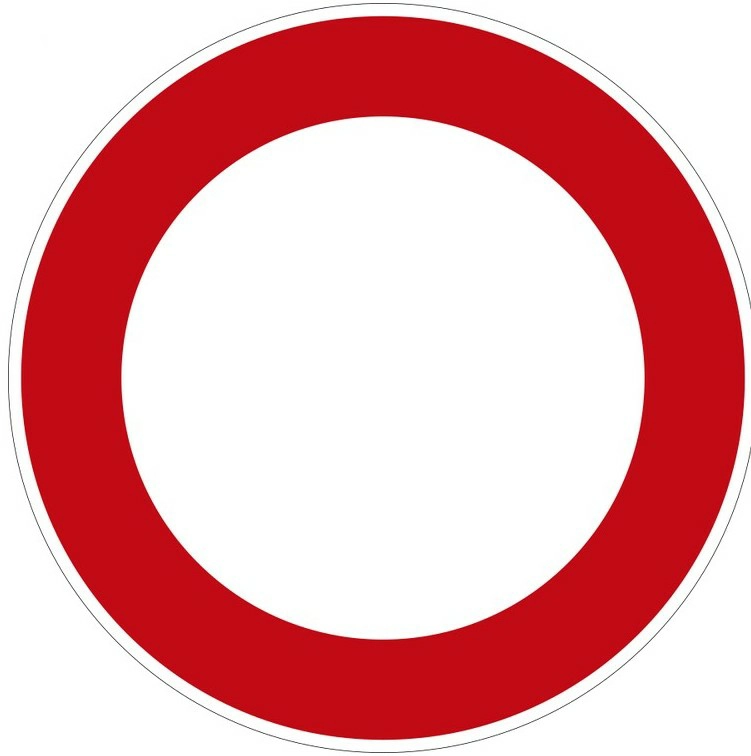
Exception:

You cannot drive in the opposite direction when there is a one-way traffic sign.

The exception will look like this:

You cannot ride in a pedestrian road or in a pedestrian zone:


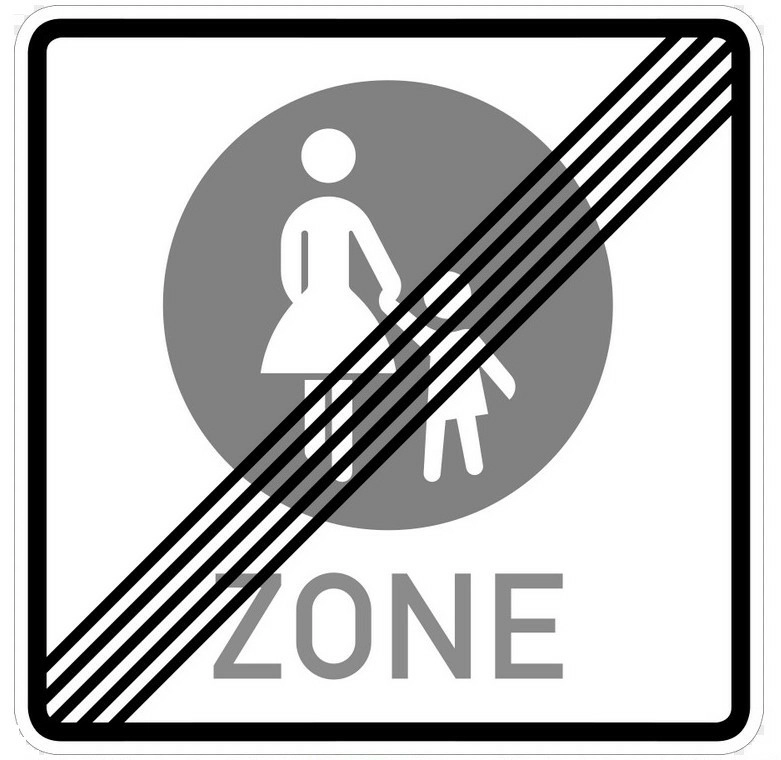
Exception:

You definitely can’t ride on autobahns and expressways. Although every year they report on those who tried.


Warning and other signs
It is also useful to know the following signs.
Quiet traffic zone (you can ride, but slowly)

Passing bicycles is prohibited
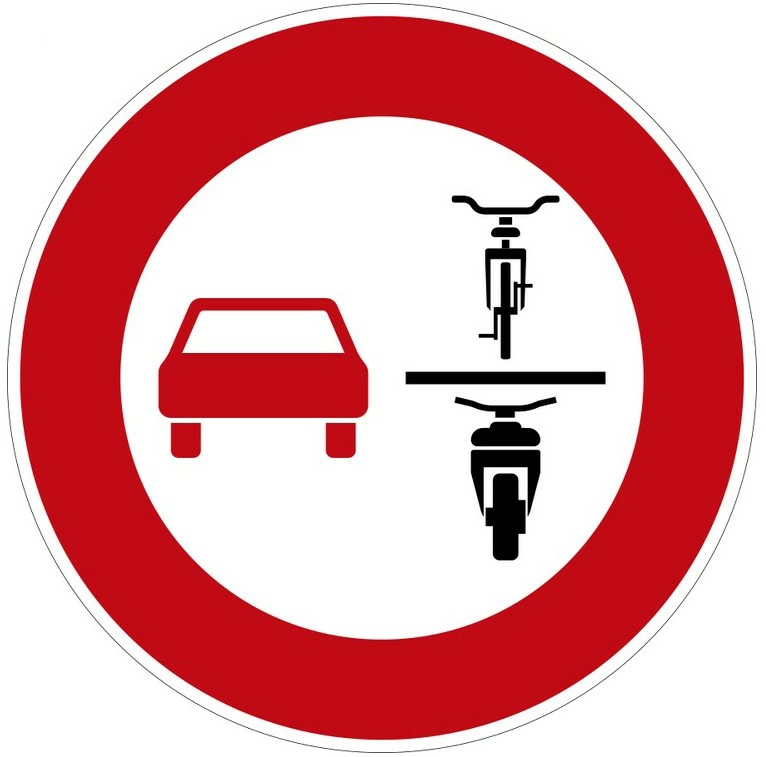
This sign is often placed for those who do not understand, in those places where the police are fed up with violating the rules. It means that the sign to which it is attached also applies to cyclists and mopeds. For example, “passage is prohibited”.
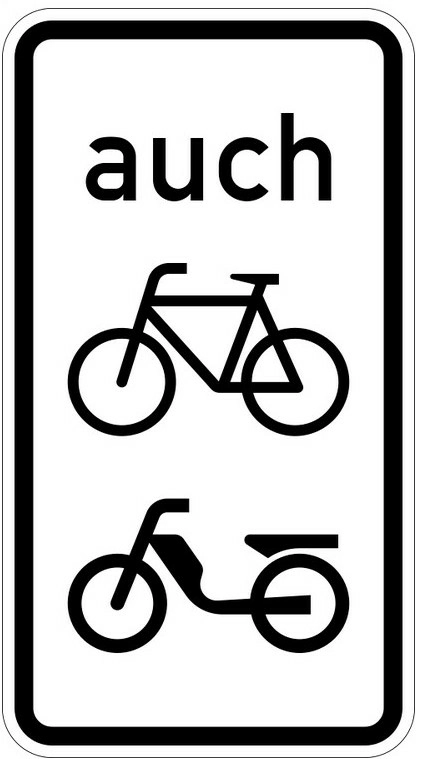
For cyclists and those who have some business on this street (locals, guests and shop visitors), the road is open.
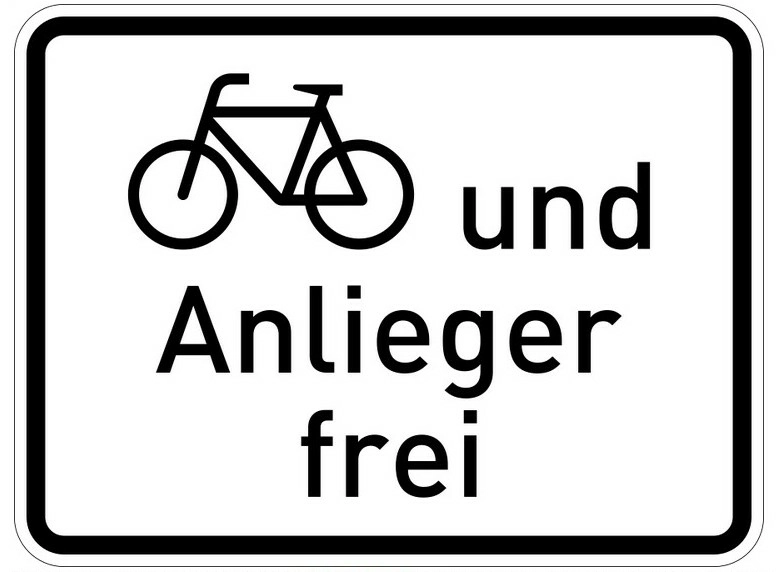
On red light, stop here.
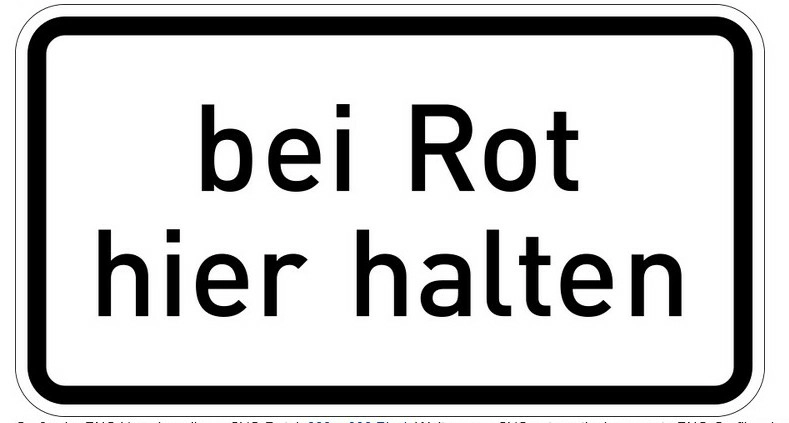
Cyclists are advised to dismount from their bicycles.
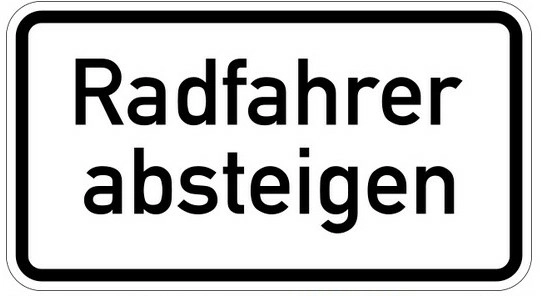
Prohibition for motorized vehicles. Usually accompanied by a permit sign for cyclists to give them peace of mind.
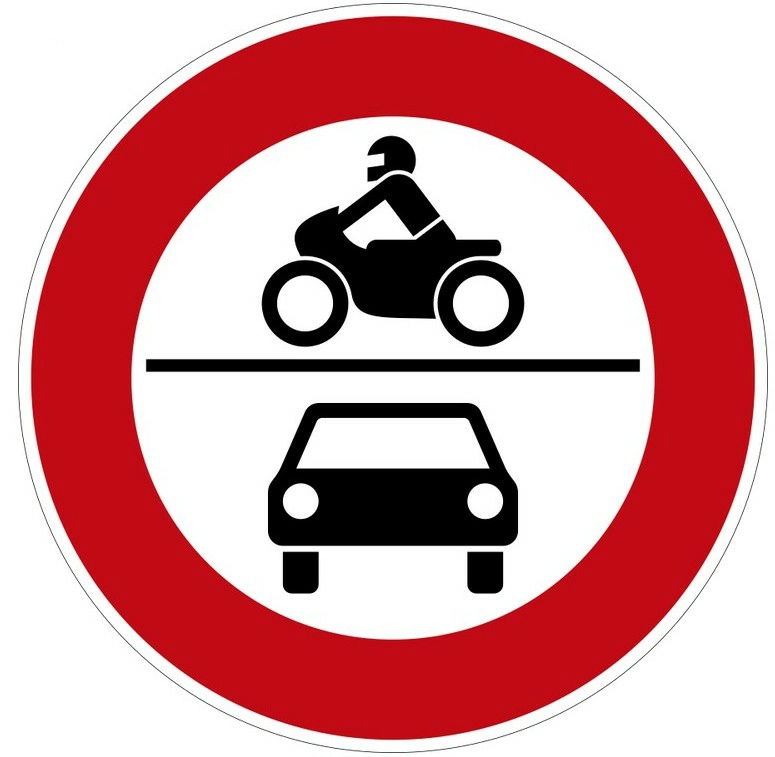
On a narrow road, your lane has the right of way (or vice versa if the right arrow is red).

The main road. Only if there are these signs in residential 30 km/h areas, your road is the main one. Otherwise, the “right before left” rule applies.
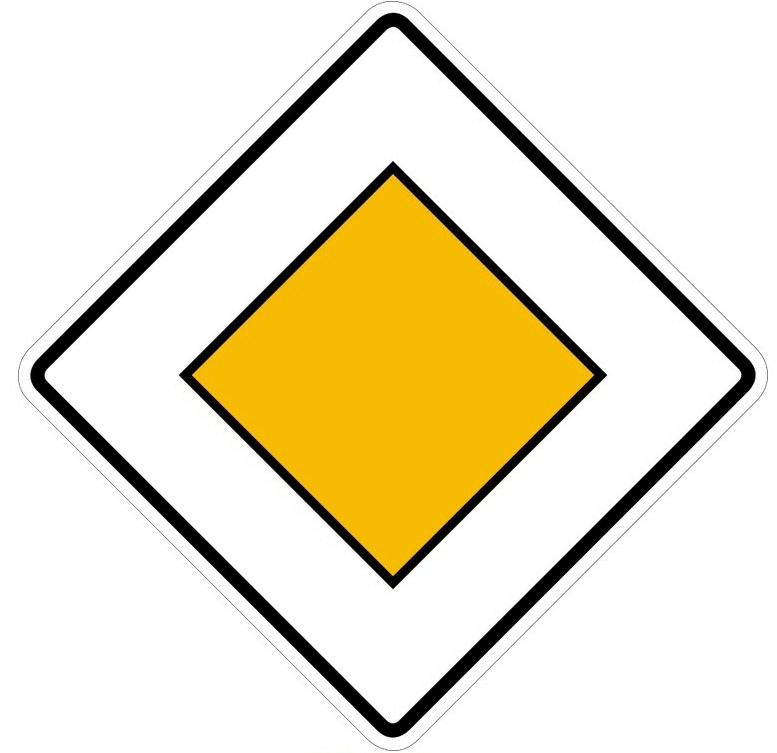

Warning about the construction site exit.

Road damage warning
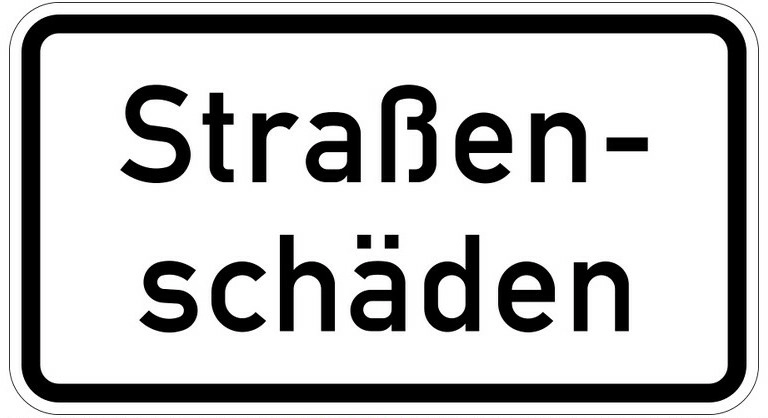
Sign for turning left

Sign for electric bicycles
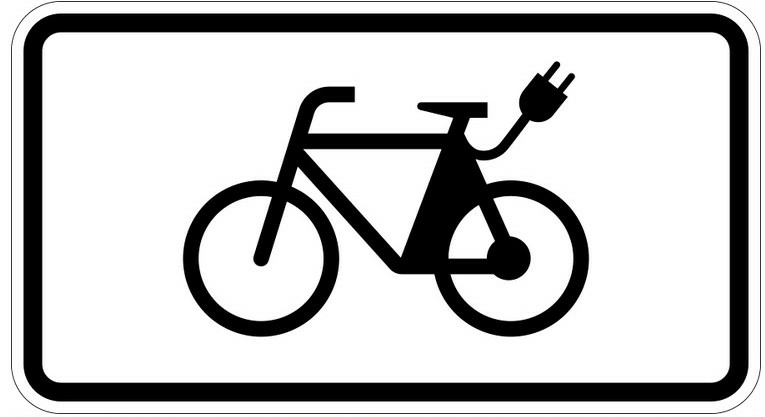
Fines for cyclists
For each fine there is an addition if obstruction, or a threat, or causing harm was created. That is, if not-use a bicycle road just costs 20 euros, then with obstruction it costs 25 euros, with a threat of 30 euros, which led to an accident or causing property damage 35 euros (of course, the damage will also have to be compensated separately if you are found guilty). Below I will only indicate starting penalties.
Hands-free riding – 5 euros
Transporting a child not in the provided devices – 5 euros
Transporting a child over 7 years old – 5 euros
Riding with headphones (if they interfere with the perception of the road situation) – 10 euros
Brakes do not work or are missing – 10 euros
Bicycle without bell – 15 euros
Using the road in the wrong way (riding in the middle of the road instead of the right lane, not using a marked lane, etc.) – 15 euros
Follow me
Driving next to each other and obstructing other road users – 20 euros
Not-use a designated bicycle path – 20 euros
Riding on a bicycle road in the wrong direction – 20 euros
Riding in areas prohibited for bicycles or on the sidewalk – 25 euros
Talking on a mobile phone while driving without hand-free – 55 euros
Disrespect for pedestrians when turning and creating a threat – 70 euros
Riding a red light – 60 euros and 1 point
Riding a red light that creates a threat to other road users – 100 euros and 1 point
Riding a red light causing damage to property – 120 euros and 1 point
Riding a red light after more than 1 second: respectively 100, 160 and 180 euros and 1 point
Other posts about #public transport in Germany and also hier: #transport in Germany
#new in Germany

